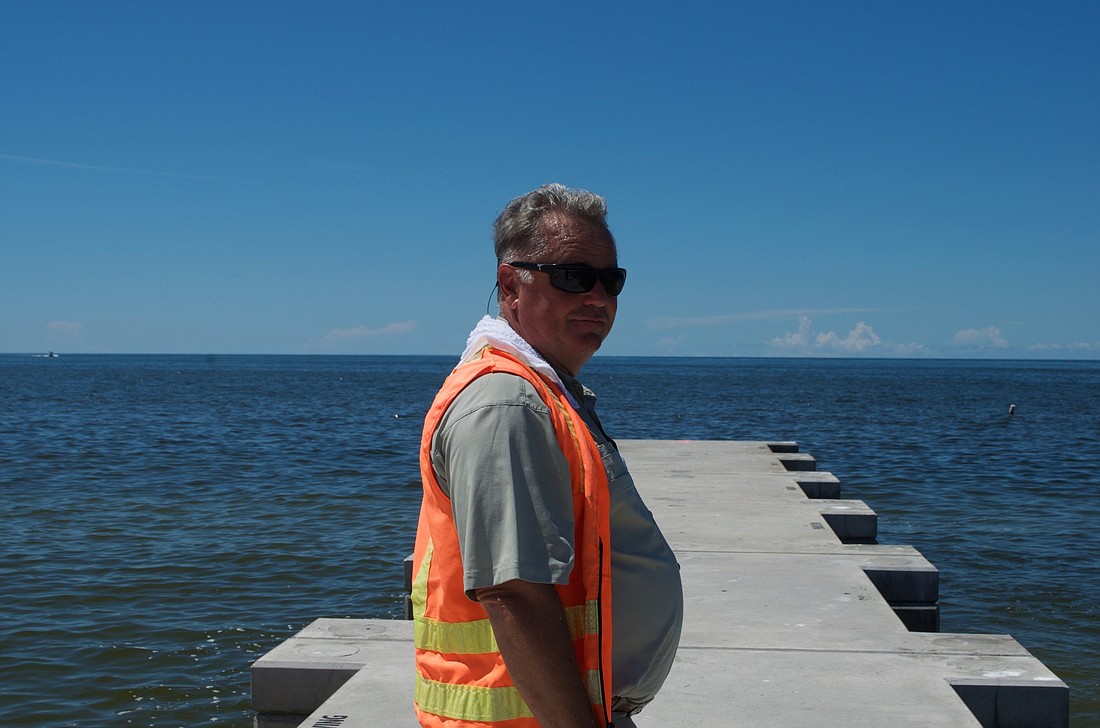- July 13, 2025
-
-
Loading

Loading

As the town oversees a project underway to shore up the beach on the north end of the Key, it has also begun working on a project to help ensure future sand placed in the area stays there.
Longboat Key officials are seeking approval from the U.S. Army Corps of Engineers and the Florida Department of Environmental Protection to construct up to five additional groins on the north end of the island with the goal of slowing beach erosion in that area. Three of the groins would be placed on the west end of Greer Island, colloquially known as Beer Can Island.
If approved by the federal and state agencies, construction of the five groins could begin in late 2019, or 2020, said James Linkogle, project manager for Longboat’s Public Works Department. The project, estimated to cost more than $12 million, would be funded by the town’s capital fund, he said.
Beach erosion on Longboat’s northern end has been going on for years. The town has been combatting the problem by putting down replacement sand from outside sources. The town is in the midst of a $1.1 million beach nourishment project on a 600-foot stretch of beach along North Shore Road that involves trucking in 30,000 tons of replacement sand from a sand mill in Polk County.
But beach nourishment alone is no longer doing the trick for the town’s north-end beach. Longboat officials constructed two groins in 2015 just off North Shore Road. A planned third groin was never built because of concerns raised by local environmentalists and Joe McClash, a former Manatee County commissioner.
“The (recurring beach nourishment) cost has gotten high enough that it is no longer economical,” said Al Browder of Olsen Associates Inc., Longboat’s coastal engineering consultant.
Hence, the need for more groins.
A survey done earlier this year by Olsen Associates found Longboat lost 61,700 cubic yards of sand on four of eight gulf-facing portions of its beach from 2017’s Hurricane Irma.
High tides have eroded the beach to the point that the beach enscarpment — a steep embankment left in the sand dune by beach erosion — has eroded to the base of the southernmost groin.
The lost sand accounts for about 9% of the total put on Longboat two years ago. The town has been nourishing its beaches since 1993, and has had more than 3.3 million cubic yards of sand placed along the island’s 9.3-mile shoreline.
Groins are shoreline structures, usually about 300 feet long, that run perpendicular to the beach.
They are either concrete – like the two off North Shore Road – or large boulders. And in some cases, they can also be wood or steel.
Groins, essentially walls built into an ocean, work by trapping and accumulating sand as it is moved down the beach by the longshore drift, which is forced to change its direction. It is rare for one to fail.
The problem, however, is that by shifting the drift, a deficit at the beach area on the other side is created. This can transfer beach erosion from one area to another.
“But since the groins were built, we’ve been able to observe how the beach performed,” Browder said.
He said the two groins have performed admirably, but it has gotten to the point that beach nourishment is getting too expensive, which has led Longboat officials to investigate the need for additional groins on the north end.
Browder said the five groins, if constructed, would likely be spaced 350 feet apart, like the two existing North Shore structures. No definite location for the barriers has yet to be identified.
The beaches will still require sand replacement, just not as often, he said. The next townwide beach nourishment is scheduled for around 2021.
“If you want to maintain a sandy shoreline, then it needs to be designed with nourishment intervals,” Browder said.
Unlike the existing cement groins, the planned groins will be made of rocks. All of the groins are permeable, which allows water to pass through, Browder said.
What has caused the north end of Longboat to be more susceptible to beach erosion is that it is located on the down drift side of the inlet, he said.
“The Army Corps of Engineers used to dredge that,” Browder said. “But, the last time they did that was 1997. They stopped doing it because they ran out of money.”